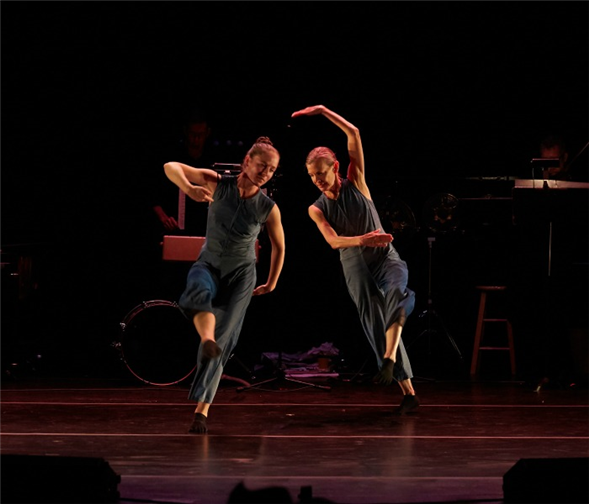Translate Page

The sexagenarian dancer-choreographer performs new and old work at Danspace Project
---
At an age when many of her peers are flirting with retirement, Molissa Fenley continues to be a vital force in dance, not just as a choreographer but as a performer, too. The 63 year old has been the foremost interpreter of her own work since she burst onto the scene in the late 1970s, with pieces marked by athletic rigor and propulsive rhythmic drive. She even famously took on The Rite of Spring as a solo, dancing topless with mesmerizing intensity to Stravinsky's landmark score.
With her short spiky hair, sharp features and intense demeanor, Fenley has been a fiercely individualistic and prolific participant in the downtown dance world since founding her eponymous company in 1977. There's often a ritualistic aspect to her work, perhaps inspired by the years she spent growing up in Nigeria.
For recent performances, Fenley has showcased reconstructed dances from her past alongside new offerings. She's doing that again for her Danspace Project program titled Their Mark (June 21-23) featuring selections from 2016's Water Table, which are new to NYC, and a condensed version of her 1979 quartet Mix.
"It's been interesting to look back at my personal history and bring pieces that have been sitting in a video box all these years back to life," Fenley says. "It's been very informative for me to see these early works, to actually embody them myself. It's really about going full circle. I can see that the vocabulary I was working with at a very early age has certainly been progressing over the years, but its initiating seeds were definitely built then."
Mix exemplifies Fenley's early works: relentless, demanding, insistent. During its original mounting, Fenley and three other dancers (including Elizabeth Streb and John Bernd) sustained a steady four-count beat via claps and stomps as they moved through tightly constructed patterns for three-quarters of an hour. The 2018 version is a lean 12 minutes. "Phrases had unfolded and were repeated later in the dance and I decided not to do the repeats," explains Fenley. "It was interesting to pick the parts that I found most salient and go from there."
Fenley's work requires an amazing amount of endurance. "Having grown up in Nigeria under the British school system, I ran track," she says. "So I was really equipped for -- and interested in -- stamina." Although she no longer runs, dancing keeps her in excellent shape, and she builds all the movement on her own body before teaching it to the other performers.
{Image1}
The four parts of Water Table included in this week's program represent about half of Fenley's ongoing series of dances inspired by H2O. While each section works independently, they're connected through theme, choreography and music, with violist Ralph Farris and percussionist Frank Cassara providing live accompaniment. "I chose to have at least one or two movement phrases from the piece before captured in the piece made after," Fenley explains. "It's a way of solidifying and making it feel cohesive."
She describes Water Table's opener, Entrance, as "a very intimate double duet" that pairs Fenley with luminous Limón Dance Company veteran Kristen Foote, alongside Merce Cunningham alum Holley Farmer and ballerina Betsy Cooper. Fenley then dances the solo Mali, which explores that landlocked nation's frequent need for water. She experienced the impact of water shortage firsthand during her time in Nigeria. "There were days on end when you had none," she recalls. "They would come around with huge tanks and you would fill a couple of buckets."
In the third segment, The Pattern of the Surface, Fenley takes a more lyrical approach to the subject. "It's about life on the surface of the ocean, and depths and coloration changes and currents -- this ongoing interconnecting of water -- but looking at it very abstractly," she says. The concluding piece, Sargasso Sea, a duet for Fenley and Farmer, is inspired by the variety of plant life in that body of water.
Although Fenley embarked on Water Table just two years ago, it feels of a piece with the dances she's been making for decades. "I think that my work is really about nature, and the theme of water seems to be consistent throughout my career," she says. She also notes that the dancers range in age from 19 to 63, in a way reflecting back her own 40-plus-year creative journey. "It brings an enormous breadth, in my mind, to the work," she says. "The stage looks like the real world. It's dancers in their prime but at different times in their lives."
---
Susan Reiter regularly covers dance for TDF Stages.
Top image: Christiana Axelsen and Molissa Fenley in Sargasso Sea. Photos by Arturo Bejar.
TDF Members: Go here to browse our latest discounts for dance, theatre and concerts.